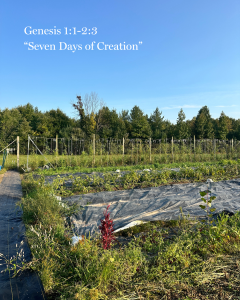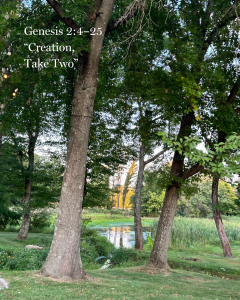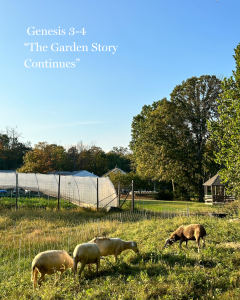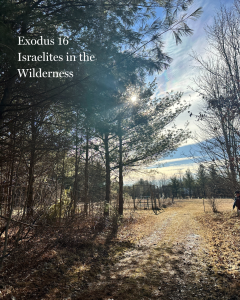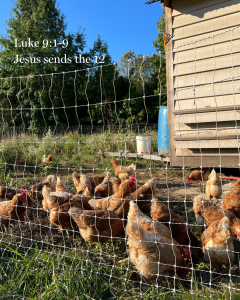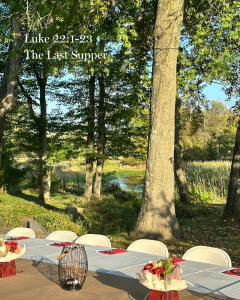1 Corinthians 12:27-13:13
February 2
David A. Davis
Jump to audio
When you have seen someone stand up to read “Love is patient, love is kind”, I am going to guess that more often than not, it wasn’t a member of the clergy. When you have heard someone read “Love bears all things, believes all things, hopes all things, endures all things”, I am thinking most of the time it was not a Sunday morning. The last time you heard reader conclude with “Now faith, hope, and love abide, these three, and the greatest of these is love”, I am guessing it was Uncle William or cousin Sandy, or a college friend still in seminary, or younger sister or brother. The reading came after all eyes were on the three-year-old hoping she made it down the aisle. After Pachelbel Canon in D. After the others walked down the aisle. Sometime soon after Trumpet Voluntary and before the two make their solemn vows, someone stands up to read “If I speak in the tongues of mortals and of angels, but do not have love…” The familiar words presume their place, just before the vows, just after the procession.
But in the Apostle Paul’s letter to the church in Corinth, the words don’t come after Canon in D or Trumpet Voluntary or The Wedding March. In the letter to the church, the “love part” comes after Paul writes about the varieties of gifts that come from God in the power of the Holy Spirit. The singable phrases about love come after Paul writes about how the church is like a body, how every part, every one in the community is important. Paul writes about God arranging every single part, just as it should be in the body, in the community, in the church. Hands. Ears. Eyes. Feet. Every single part is important. “If one member suffers, all suffer together, if one member is honored, all rejoice together,” Paul writes to the church. These so familiar verses about love come after Paul affirms that everyone has gifts to be used and celebrated in service to the community. “Are all apostles? Are all prophets? Are all teachers?….Strive for the greater gifts”. When you read I Corinthians 13 on Sunday morning, you have to start somewhere in chapter 12. You have to at least start with Paul telling the church, I will show you a still more excellent way.”
You will remember that the church founded by Paul there in Corinth was a community of faith that found themselves threatened by allegiances and favored relationships. A community of faith that disagreed about things, some of them really important things. A people of faith wrestling with their own thirst for knowledge, mistakenly thinking that the Word of the Cross, the message of Jesus, was primarily a matter for the mind rather than the heart. People of God trying to hold on to their faith in an ever-challenging secular world. A gathering of God’s people trying to be faithful in their witness to Jesus, in their proclamation of the gospel, and in their desire to live in the power of the resurrection. A fledgling faith community covered in all of the dust of life, trying to be church. Or, in Paul’s language, a community called to live as the Body of Christ in the here and now.
“And I will show you a still more excellent way.” That’s what it follows. The famous chapter on love, the words that sort of create their own atmosphere when they are read into the room, their own aroma of romance. The Apostle Paul on love. It doesn’t come after the wedding march. It comes after this: “I will show you a still more excellent way”. A still more excellent way when it comes to life together. The more excellent way. The Apostle Paul on love in church. “Let me show you”. But Paul doesn’t “show” anything. He keeps writing. The church looks around, but Paul just writes some more. “Let me show you,” and the church forever looks around. Where’s he pointing? Who is he looking at? A picture. A parable. A drawing of the dirt. Anything Paul! But he just kept writing, “If I speak in the tongues of mortals and of angels, but do not have love.”
I have told you before about the saint in my first congregation who took me to McDonald’s for breakfast every Tuesday for 14 years. His name was Mark. He joined that church right after he came home from World War II. He landed at Normandy Beach the second day. One morning over an egg McMuffin, I asked him if the war was as bad as the movie “Saving Private Ryan” made it look. He said, “It was much worse, David”. Mark worked in sales for ten or so years. Vacuum cleaners door to door, then caskets to funeral homes. He then worked as a custodian in the local schools. I think he retired before I was born. On more than one occasion, Mark brought home someone who had no place to live. One year, when the church hosted twenty or so unhoused men in the fellowship hall for two weeks, it was Mark who arrived every morning at 4:30 to take one of the men to work who had just landed a job driving a truck. Without knowing it, Mark mentored generation after generation of young men in that church when it came to faith and being a father and a husband, including me.
When I arrived as a 24-year-old pastor, it was Mark who took care of me. We talked about everything over the years. One day, we shared our breakfast with a mission co-worker /friend of Mark’s who was on furlough and home visiting friends and family. At breakfast, he expressed his disappointment that we didn’t say grace before the meal. “After all”, he said, “I’m eating with the pastor and an elder”. I wanted to say, “We’re in McDonalds for goodness sake”. I didn’t say it. Mark didn’t miss a beat and, without a hint of judgment or defensiveness, said, “I pray long enough at dinner for all three meals.” I believed him.
Like many seminary graduates and new pastors, I landed in ministry with all kinds of information, ideas, opinions, and critiques of all that the church needs to be. I hit the ground back then, ready to leave my mark on the church. But in the power of the Holy Spirit, and by grace, I was shown a more excellent way. God was pointing at Mark’s life. Mark showed me. Mark taught me more about the gospel, more theology, more about the church than I ever learned in the classroom. Never an unkind word. Always had open arms for those he disagreed with. Unfailing in his care for others. Visiting a dying friend. Laughing with a lonely widower. Constant in prayer for those on his heart. Mark taught me about being a pastor. Mark’s life was a witness to the gospel in so many ways. But especially in the way he showed me the still more excellent way. The love he shared in and through that community of faith. Love in a particular community of faith. Love made very real. Love made very real to me.
“Let me show you,” Paul wrote to the church. And yes, he kept on writing with words, with poetry, that you and I will not soon forget and neither will the church or the world or the romantics, or Hallmark, for that matter. But when you read it, when you hear it on Sunday morning, remember the context, the place, the atmosphere that these familiar words actually presume and create. A community of faith that by God’s grace and as a gift of the Spirit, strives for the “still more excellent way”. Members of the body of Christ here and now who live like and know that “the greatest of these is love”.
A collection of the followers of Jesus Christ who know that when tragedy strikes, when death comes to soon and for too many, the first move is for love because “love never ends”. They know that because they have seen it. They have lived it. God showed them. People of God who believe that in the hardest of seasons and the most difficult of days, the simplicity of the gospel becomes all the more profound. “Love is patient; love is kind, love is not envious or boastful or arrogant or rude.” They believe that because they have seen it. They have lived it. God showed them. A community of God’s people who witness to the clearest and most basic teaching from the bible as the most important, especially when listening to those who choose to contort it and abuse it for their own gain. “Love does not insist on its own way; it is not irritable or resentful.” They witness it because they have seen it. They have lived it. God showed them. A community of faith who come to understand that the world’s complicated way of being can never erode the lasting power of a timeless teaching like “love does not rejoice in wrongdoing but rejoices in the truth.” They understand it because they have seen it. They have lived it, God showed them.
Before the Apostle Paul wrote, “I will show you a still more excellent way”, God showed that more excellent way: “The Word became flesh and dwelt among us…full of grace and full of truth.” Before Paul wrote to tell the congregation “I will show you”, Jesus sat at the table with his disciples and said, “This is my body broken for you….This is my blood shed for you.” Jesus pointed. Jesus showed them. Jesus did more than write about the still more excellent way. “Every time you eat this bread, do this in remembrance of me….Every time you drink this cup, do this in remembrance of me.” Yes, Jesus shows us he is the more excellent way.
I don’t often associate coming to the Lord’s Table with the physical, biological yearning to be fed. Though I do love the aroma here at the Table, Yes, yes, I know Jesus said “Blessed are those who hunger and thirst for righteousness, for they will be fed.” But I don’t often experience hunger pangs or a craving for this meal. Maybe that’s because of the Reformed tradition that shaped me without weekly eucharist. Maybe that’s because somewhere deep inside, I always assumed it was more polite to wait for Jesus to invite me through those words of invitation at the start of the communion liturgy.
But then again, some days, some weeks, there is a longing. A desire far beyond words. A need that comes with hunger pangs A longing to feast on Christ’s love like you can never get enough. To rush to the table for the dinner bell of righteousness is being rung. To sit down at this Table of grace even before Jesus says “come and get it”. To sit down and be nourished now and forever, to be encouraged now and forever, to be strengthened now and forever, to be sustained by nothing more than Christ’s righteousness, grace, and love.
The Apostle Paul concluded, “The greatest of these is love”
Come to the Table this morning. Come to be fed and receive the love of God in and through Jesus Christ that we all crave.



